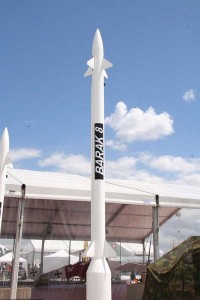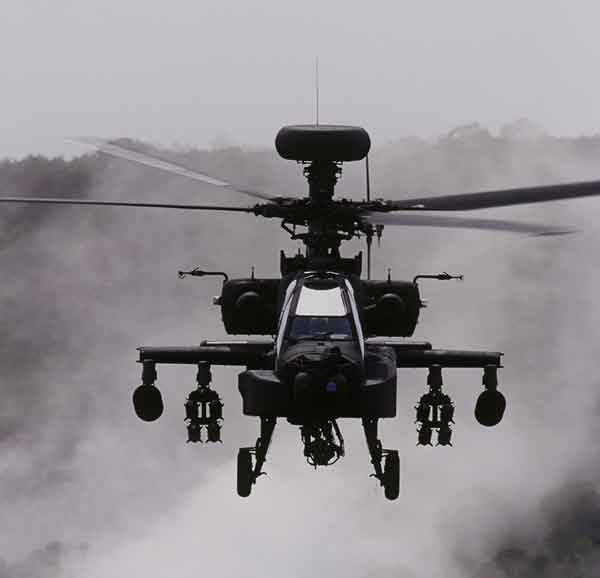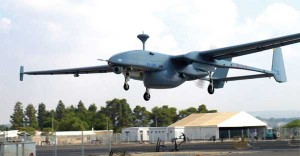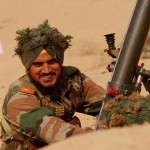Attack Helicopters
The government has accepted that the anti-armour attack helicopters will function under the Indian Army. As in the Gulf War, when the Apaches destroyed Iraqi Air Defence radars to create a gap and enable safe passage to other fighter aircraft to attack Iraqi targets, attack helicopters have other uses for the IAF. War is a continually changing phenomenon and the utility of attack helicopters for an emergent need should be left to the Air Component Commander under the Joint Forces Commander! The numbers of these airborne platforms for both the IAF and the IA should be arrived at after a cost benefit study.
The current state of SAMs in the IAF is reported to be far below the optimum level…
Surface to Surface Missiles (SSMs)
SSMs beyond the Tactical Battle Area will form the other component of combat power. An operational research study needs to be conducted to determine a target to weapon system matching between long range fighter aircraft such as the Su-30s and SSMs such as the AGNI -inputting their accuracies, their vulnerabilities, the mobile and static targets that each weapons system can tackle and arrive at the optimum numbers. In the fast moving tactical battle space, in spite of tactical SSMs and Artillery, the need may arise for additional firepower from fighter aircraft to add to the weight of attack. Since future operations will be jointly carried out, this may require a few changes by the IAF and the IA. This joint requirement could arise even in a maritime setting, when land and carrier based fighter aircraft could act in tandem with SSMs to tackle a naval adversary. To counter the asymmetry in relation to the PLAAF, the IAF must therefore develop a missile-based credible nuclear deterrence.
 Surface to Air Missiles (SAMs)
Surface to Air Missiles (SAMs)
The current state of SAMs in the IAF is reported to be far below the optimum level, for both the medium and short range variety. The Pechora Medium Range SAM, the OSA Short Range and the IGLA shoulder-launched point defence SAM – all need upgradation or replacement. The Army’s and the Navy’s SAM requirements need to be dovetailed with the IAF’s and at least two vendors ought to be identified to meet the overall needs of the defence forces and prevent modernisation by a single vendor.
The indigenous Medium Range SAM AKAASH holds much promise and must be supported by all three services. An example of a unified approach to the purchase of SAMs is that of the BARAK Israeli SAM. If the Navy and the IAF had gone for the naval and land-based BARAK, there would have been cost savings in placing large orders as well as capability build up for both the services in a short span of time. It is understood that the Defence Research and Development Organisation (DRDO) with Israeli guidance is developing a Medium Range SAM with a range of 70 km and a Long Range SAM for 100 km in the future. These can be taken into consideration.
Well-trained, motivated and properly led manpower can lead a side to victory…
Close in Weapon System (CIWS)
This is synonymous for the gun or short range missile protection to land-based targets of the Army and the IAF. All airfields, strategic targets, as well as Army formations are provided point defence by elements of the AD Arty. It is suggested that the IAF take over the responsibility of airfield and strategic target protection from the Army allowing them to look after the Tactical Battle Area (TBA) only. When approved, the IAF needs to create an additional cadre for the CIWSs with additional training and accommodation facilities for this important weapons system. The next step is to arrive at a common CIWS for all three services without compromising their individual requirements.
UAVs
All three services use UAVs, and these Intelligence, Surveillance and Reconnaissance (ISR) weapon systems have proved their worth as effective aerial delivery platforms too. When the task is dangerous, dirty and dumb, UAVs are the preferred modes of ISR and weapon delivery. There is no loss to aircrew and they can remain on station for hours on end by day and night. Although their cost is much less when compared to manned fighter aircraft they do have shortcomings. As of now, they only carry Air-to-Ground Missiles of limited range and weight and with low sub sonic speed, they can only operate in a benign air defence environment. They have yet to develop their capability as fully operational UCAVs to compete with manned fighter platforms.
There is a need to develop UCAVs for the IAF either indigenously or through direct purchase. The proliferation of UCAVs and armed UAVs of the three services will need a holistic approach towards command and control of these vital assets. During operations, the chances of interference between the UAVs of the three services need to be addressed so that tasks are speedily accomplished.
As UAVs and UCAVs are inducted into the IAF, not only should the country prevent the proliferation of these capable weapons systems in the three services to reduce duplication but the IAF will itself need to take a hard look at the ratio of fighter aircraft vis-à-vis the UCAVs in order to ensure the optimum mix to serve the IAF’s needs!
The Human Element
Well-trained, motivated and properly led manpower can, even with inferior combat power, lead a side to victory. The important considerations are to make all the elements of combat power function in a cohesive manner. This will be possible when the induction of fighter/attack helicopter/SSMs/SAMs/UAVs is done into each element keeping in mind their future employability, their career progression so that each officer can at least aspire to a three-star rank and their training is geared to keep them fighting fit.
UCAVs need to be developed through the indigenous route or direct purchase…
Presently, the IAF has only the pilots aspiring to a three-star rank. As more and more UAVs, UCAVs, SAMs and SSMs are inducted, the need to have a specialist cadre of these non-flying and operationally relevant officers and men will force the IAF to broaden the scope for these officers to rise to higher two and three-star rank operational appointments in the service. Not to forget that as the entry requirements for airmen move higher to graduate level, they too must be given the opportunity to rise to the rank of an officer. While this opportunity is present in the IAF, the future will see more and more operational duties being performed by airmen. Hence their training itself must be tailored to enable them to become officers as a natural progression of their capability! These measures will ensure that the restructured IAF will become a more inclusive service!
Non-Combat and Vital Issues
Combat power needs the inputs from Intelligence Surveillance and Reconnaissance platforms, an effective Command, Control and Communication System for effective guidance and feedback, Force Multipliers to extend its reach and punch and finally, Electronic Warfare platforms to provide protection against enemy electronic emissions. Combat Power is most effective when all these elements function in a cohesive manner.
Conclusion
The IAF’s capability covers the IOR countries on the maritime side, and its principal adversaries Pakistan and China on the landward side. The government needs to finalise the contract for the 126 MMRCA at the earliest to prevent losing its combat edge in quality and numbers. A specific fighter aircraft for precision attacks in the hills should be a high priority while a scientific study to determine its utility for the IAF and the IA needs to be commenced as early as possible. An operations research study must be carried out to determine the optimum numbers of SSMs and Long Range Aircraft. A credible SSM nuclear deterrence is to be developed in relation to China.
The pace of SAM development by the DRDO with Israeli assistance should be quickened. UCAVs need to be developed through the indigenous route or direct purchase. Integration and coordination between multi-agency UAVs should be carried out to allow freedom of operation between each user. Depending on the external security situation, a study may be carried to determine the numbers of fighter aircraft and UCAVs that the IAF needs. Finally, the human element requires career progression for all officers of the combat power stream so that they can aspire to rise to higher ranks. Airmen in the combat power stream also need to be allowed to aspire to officer rank. These measures will facilitate the restructuring of the IAF’s combat power to be more inclusive and effective.







The next is the progress of the Light Combat Aircraft (LCA) project that started in 1983 but the aircraft is yet to reach full operational capability status. Being the main operator, the IAF should be the program managers and determine the cost benefits of this programme. plsease visit at once luxury villas in gurgaon
By the time the Rafale and the LCA are operational – they will be a antiquated. Why is the Airforce playing with the nations security in bending to a Political Government. ? Dont you think that a SU_35 would have been a better deal that the Rafale. Where does the LCA stand in comparison to the latest aircraft being currently introduced world over. The Airforce is tongue tied on the issue of the Rafale and the LCA. Lets have your views on this Air Marshal.
Part of the reason for IAF retiring so many of their MIG 21/23/27 is to thumb at the Government that our way or highway. They want Rafale deal at any cost, no matter how bad the deal is. To force the government in this decision they will not order LCA on one excuse or other, retire way too many fighters under one excuse or other. Worst change specs. On LCA to help the delay so that they could make a case for Rafale purchase.
Not a very smart way to make deals. If not due to hum dum delays not only by DRDO, but obstructionist behaviour of IAF, Tejas would be in Indian inventory today. But IAF says nothing doing; not until it is fully satisfying the constantly changing GQSR, we are not accepting it. Their eyes on bad Rafale deal.
Rafale is not a bad aircraft. Of all the aircraft in IAF inventory (except Su-30), Mirage has the best safety record, lower accidents and good maintenance record. Similarly, Rafale, derived from Mirage has a similar lineage. Remember, in combat, what matters is potency of platforms and their actual availability. Mirages in Kargil war have proved very effective for precision bombing using laser guided or PGMs. LCA development should have been cancelled in mid-nineties as it became useless and 1 generation behind by then already. Its a foreign aircraft assembled in India -GE 404 engine, European and American FBW and avionics – whats Indian other than IAF emblem and the paint (Asian paint probably)? Note that Tejas engine is underpowered to carry any meaningful weaponry and its Kaveri engine hasnt been developed (it disintegrated on test bed at GTRE). With such limitations, it can never see light of day of war, irrespective of patriotic feelings.
That the IAF is rejecting Tejas is 100% right – that program is a white elephant that served only to give govt jobs to worthless people in DRDO and HAL. Have you ever investigated that the accident and failure or MTBO rates of Russian origin planes assembled at HAL are higher than those imported directly from Russia (including MiG 21 Bison, Bis, MiG-29, Jaguar and Su-30). Why? Can HAL people not even assemble planes properly after taking tens of thousands of rupees from Central Govt while their workers smoke bidi and play cards in their plants (google reviews of HAL Ozhar and Bangalore plants). Rafale is the best fighter India can get and the current Govt should only ensure that 1. There are no monies changing hands under the table in this deal 2. Rafale assembly line and ToT is done to India to create jobs 3. Latest Software as well as FBW and Hardware is integrated into Rafale before model is finalized for IAF 4. There are other operational aspects like reducing radar signature by layers of special paints that should be done before induction to protect them in war 5. All current IAF airfields in India as well as ALGs in JK and NE should be made NBC proof and with hardened, hidden plane shelters to ensure they are really bomb-proof in case of war (runways cannot be protected though). If you check in google Earth, compare Pakistani airbases and Indian ones and see the difference in plane storage sheds. These are low cost options to save the costly planes in war and from Sun/heat damage. 6. Tejas should be inducted in large numbers but in lesser roles and there should be new plane design started to create a really meaningful combat plane in next 10 yrs.
Sir
There are too many generalities in your paper.
Please do reconcile that fighter jets of today are far more capable than what IAF flew in from sixties to eighties. Our neighbours like China have 80% of the fighter aircrafts rooted in sixties. Their modern aircraft today are less than 200. Again they cannot send all of these to Tibet and leave other theatres empty.
Pakistan is no different. Their American supplied fighters date back to eighties and nineties. They have upgraded these but still not as capable than upgraded Mig-29 or Mirages. The IAF’s SU-30MK1 are a class in itself.
So the point here is that since fighter jets have gone a lot more capable today, is there any point in sticking to 45 Squadron or as say 42 Squadron strength?
In my opinion a lot more capable weapons, radars the fighters carry, highly capable AWACS, ground based radars and highly efficient & capable maintenance crew is the bigger need of the hour.
Hopefully Rafale or its equivalent will join the IAF in five years, followed by LCA 1 and 2. By then we would have retired all the MIG-21s and others. Also hopefully stealth fighter of Russian origin will become a part of IAF. If none of imports materialize, still IAF with newer and highly capable LCA – 1& 2 and other modern fighters would be a very potent force in Asia. After all we not fighting the whole world, just the two who are troublesome neighbours.
Hence stop harping on 42 or 45 squadrons. Concentrate on the capability and weapons.
Are you drunk? This is one of the best articles I have read on IAF at IDR and so do other commentators think. Are you by any way associated with LCA program that you suggest it for IAF? Do you even know what is its engine rating, MTBO, percentage of Indigenisation? Just screw driver assembly and painting of tin cover does not constitute Indian aircraft okay. Read up specs of Chinese J-10 and J-11 aircraft, their attack helicopters made in China as well as F-22 copy of fifth gen stealth fighter on Wiki and you will know. Another point – during Red Flag at Nellis AFB in USA, USAF paired F-15 and F-16s against IAFs Mig-21 Bison and Su-30 MKI. When the F-15 and F-16 used networked (electronically data sharing) warfare, Su-30 MKI was beaten to death which wasnt revealed by IAF due to operational reasons (understandable). The reason for this is that Su-30 is very big plane with big RCS and big jet plume from engines. So, Pakistani F-16s maybe bought in 80s or 90s but they keep begging to US to upgrade them to block 50-52 C/D which is no kids play. Lookup Wiki for Block52 C/D specs and you will again stand corrected. Now about LCA – its a dead bird and needs to give way to newer and meaningful design for a 4.5 generation indigenous plane design in next 5-10 yrs. LCA is expensive, useful in few roles, carries few weapons and with smaller range – basically an upgraded trainer aircraft. It should be immediately discarded and all previous program management of past 25 yrs criminally prosecuted for fooling country and looting the govt money. Thats what
Air Marshal, some how we keep arriving at a selfsatisfying and unrealsitic figure of 42 Squadrons being enough for the countrys airforce. We have not weighed the threat factors correctly. Nor have we weighed in our strategic perceptions in totality. The PLAF will be able to field in a vastly superior force in terms of quantity and quality against the IAF. They will be operating from no less than 20 Airfields for operations against India. We have a vast area to dominate and patrol when we look at the Indian Ocean. Our land frontier against the Chinese streatches to about 3500 kms. Unlike the previous wars this time around the requirment to support the ground forces will be much more. Therefore if we wargame the tasks of Air Superiority, Air dominance, survillance, ground support, interdiction, and the physical area to be covered 42 Squadrons qill not be enough. We need something to the tune of 60 to 65 combat squadrons to do a justifiable job.
You are absolutely correct. Please note that Indian squadrons which are of 70s, 80s or 90s vintage are no match for Chinese PLAAF both in terms of quantity and quality. Chinese were also given Sukhoi-27 (predecessor of Su-30) by Russia so Sukhoi platform is no surprise for them as well but jingoistic Indians think Su-30 is brahmastra and undefeatable. One only needs to read the statistics of their J-10 and J-11 fighters which they are supplying to Pakistan and will understand what they are capable of making. They have already indigenously made a copy of F-22 – it may not be as good as the F-22 but the fact that it is copying US designs fast says something about the war machinery of that country. Most jingoistic Indians dont even know Chinese have successfully tested Anti-Sat missile that shoots enemy spy satellites high above the ground in space in GS or PS orbits while India has failed to effectively make Akash SAM that shoots planes only 15-25 kms above. In case of war with China, it will field atleast 20-30 squadrons + SSMs from atleast 15 bases and it will be total embarassment for us. The sheer size and well oiled machine of PLAAF sends shivers down USAF leave alone third world countries like us. During recent Sino-Japanese standoff, USA (ally of Japan) sent B-52 and F-22 to scare China but they tracked them and sent interceptors in return. India needs to produce quantity (35 squadrons) to provide CAS, interdiction or interception and quality (25-30 squadrons) for air-superiority and ground attack. Obviously it will need upgrade in ALG/Airbases. AEW and Refueling planes as well for support – just to put up a meaningful punch.
The next is the progress of the Light Combat Aircraft (LCA) project that started in 1983 but the aircraft is yet to reach full operational capability status. Being the main operator, the IAF should be the program managers and determine the cost benefits of this programme.
This is the best post I have ever Seen.
You Did a great job
Thanks for share
every indian concern about security plz visit bharatkarnad.com china is real enemy admin plz share we need credible thermonnuke test